Companion Plants That Have Pesticidal Effects
Aromatic repellent plants are a powerful, natural way to deter pests and wildlife in your garden by leveraging their pungent scents, which mask the smell of desirable crops or repel unwanted critters. These plants often contain volatile organic compounds (VOCs), such as terpenes or essential oils, that interfere with pests’ sensory systems or create an unappealing environment.
Deter deer and rabbits with strongly scented plants. Intersperse lavender or rosemary among vegetables to mask their scent and reduce wildlife browsing. For a unique addition, plant daffodils around garden borders; their toxic bulbs repel voles and gophers.
Below is a list of additional aromatic repellent plants, their specific uses, and how they work in companion planting.
1. Sage (Salvia officinalis)
Sage is an aromatic repellent plant from the Mediterranean and the Middle East. Therefore, it grows well in sunny locations with well-drained soil. It grows well in USDA growing regions 4 through 10.

- Repels: Cabbage moths, carrot rust flies, and deer.
- How It Works: Sage emits a pungent, camphor-like aroma that confuses pests like cabbage moths, preventing them from locating brassicas, such as cabbage and kale. Its strong scent also deters deer, who avoid its bitter taste and smell. The plant’s volatile oils disrupt insect navigation, reducing egg-laying on nearby crops.
- Companion Use: Plant sage near broccoli, cauliflower, or carrots to protect against pests. Its woody structure also provides habitat for beneficial insects like hoverflies.
2. Catnip (Nepeta cataria)
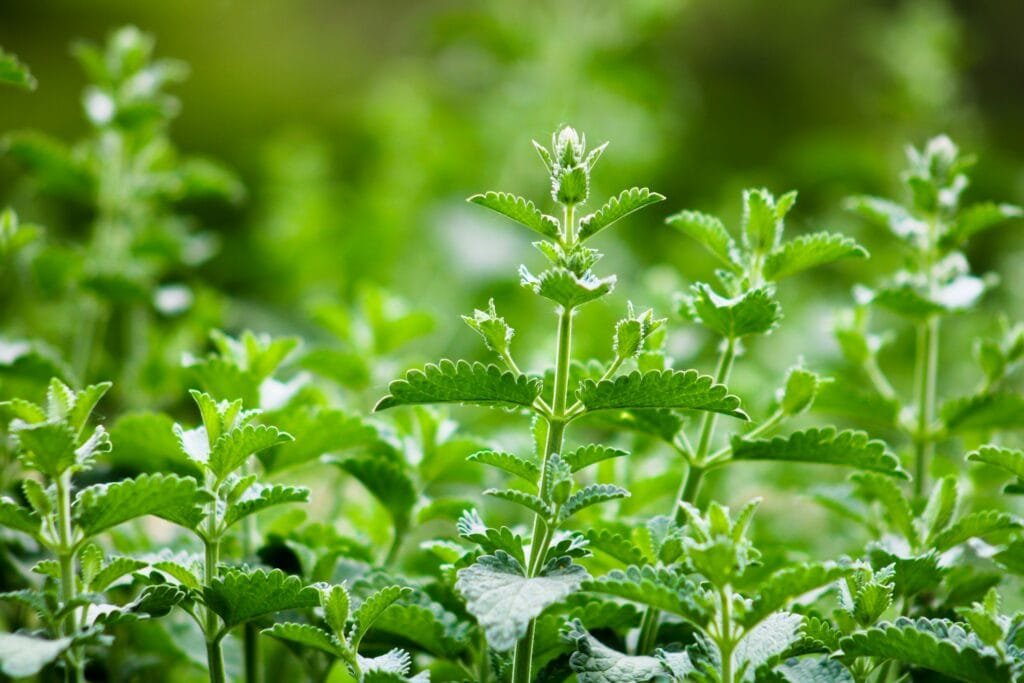
- Repels: Aphids, squash bugs, Colorado potato beetles, and mosquitoes.
- How It Works: Catnip’s active compound, nepetalactone, is highly repellent to many insects. It disrupts their feeding and mating behaviors, causing them to move away from nearby plants. While attractive to cats, its scent is unappealing to pests like aphids, which are repelled from crops like tomatoes or peppers.
- Companion Use: Intersperse catnip near squash, potatoes, or roses to reduce pest pressure. Trim regularly to prevent overgrowth and maintain its repellent effect.
3. Hyssop (Hyssopus officinalis)
Like sage, Hyssop originated in the Mediterranean and the Caspian Sea regions. It now grows in many countries worldwide. It prefers slightly alkaline soil, is cold hardy, and is sun—and drought-tolerant in most areas.
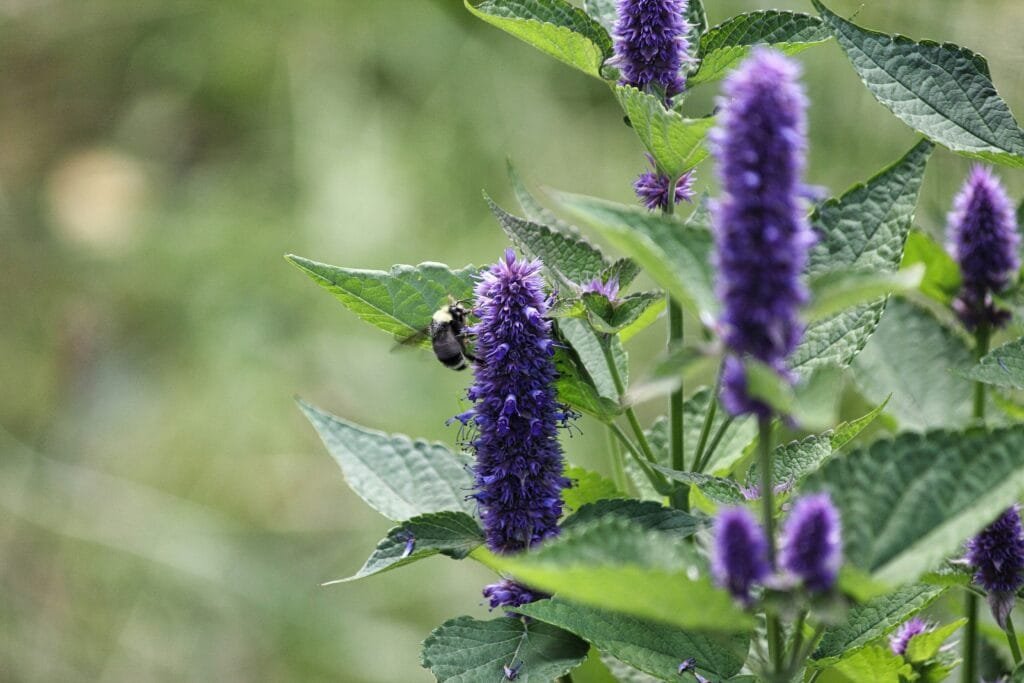
- Repels: Whiteflies, flea beetles, and cabbage worms.
- How It Works: Hyssop’s minty, slightly bitter aroma, derived from pinocamphone and other oils, repels soft-bodied pests like whiteflies by overwhelming their olfactory senses. It also attracts pollinators and predatory insects, creating a dual-action defense.
- Companion Use: Plant hyssop near grapes, brassicas, or beans to deter pests while boosting pollination. Avoid planting near radishes, as hyssop may inhibit their growth.
4. Lemon Balm (Melissa officinalis)
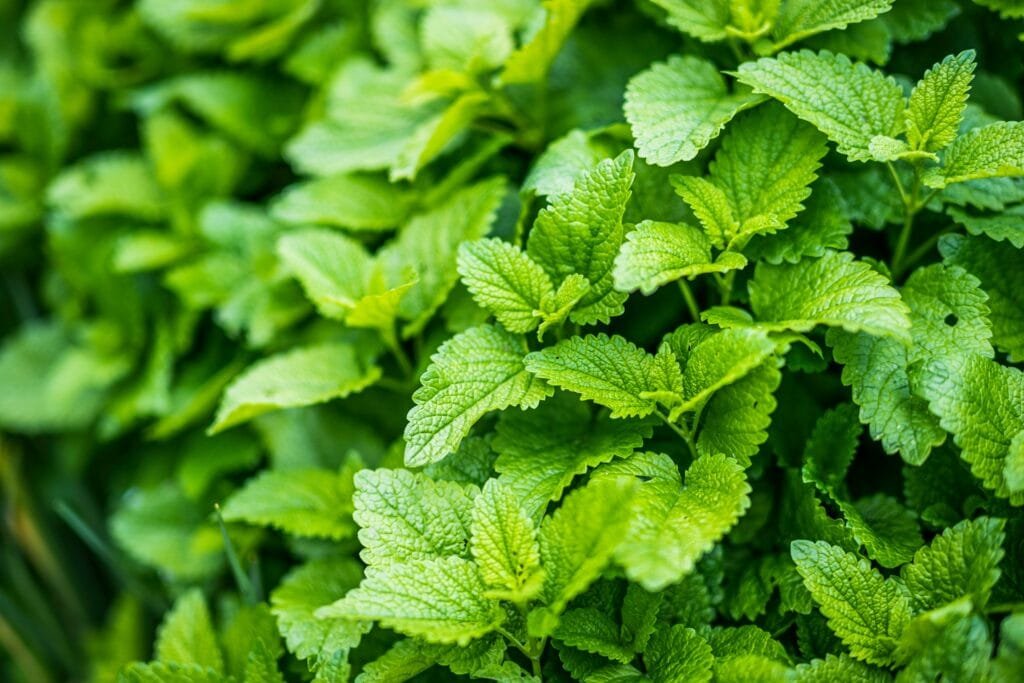
- Repels: Mosquitoes, gnats, and some leaf-eating beetles.
- How It Works: Lemon balm’s citronella-like scent, rich in citronellal, is highly effective at repelling mosquitoes and other flying pests. Its lemony aroma masks the smell of nearby vegetables, making them less attractive to beetles and other herbivores.
- Companion Use: Grow lemon balm around tomatoes, eggplants, or outdoor seating areas to create a pest-free zone. Its spreading habit also helps suppress weeds.
5. Wormwood (Artemisia absinthium)
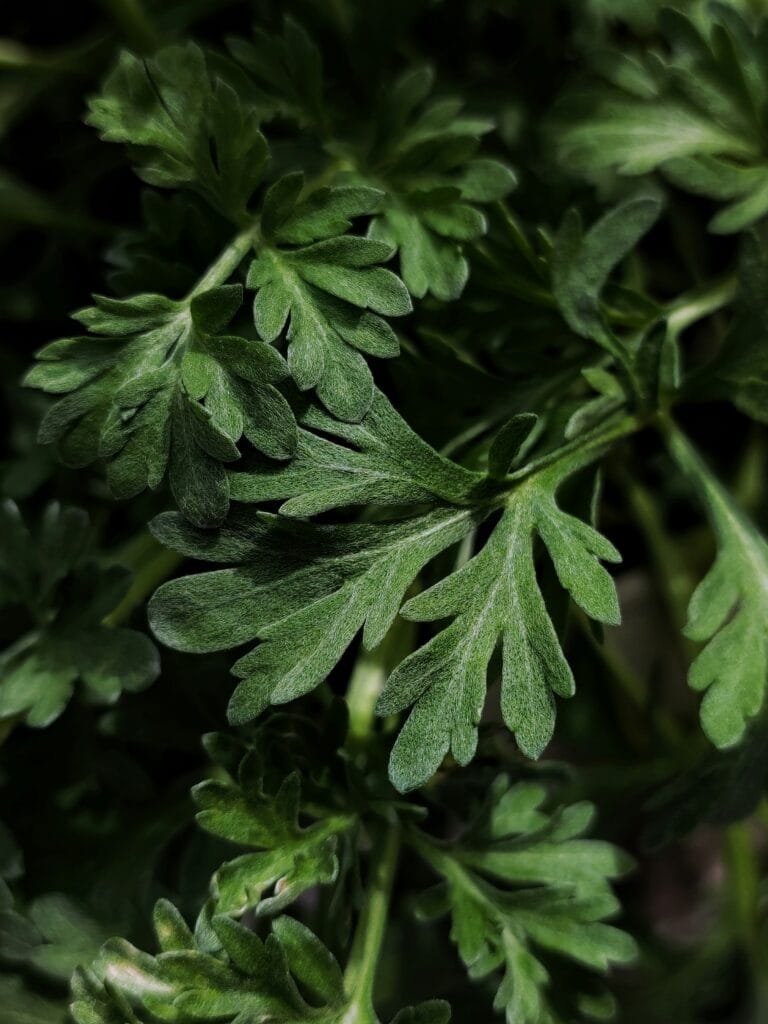
- Repels: Ants, slugs, mice, and deer.
- How It Works: Wormwood’s bitter, potent aroma, driven by absinthin and other compounds, is highly offensive to pests and wildlife. It disrupts the feeding behavior of slugs and ants while deterring deer and mice, who avoid its toxic foliage. Wormwood also has allelopathic properties, which inhibit the growth of nearby weeds.
- Companion Use: Plant wormwood as a border around vegetable gardens or near fruit trees to create a protective barrier. Use sparingly, as its allelopathy can affect some crops.
6. Feverfew (Tanacetum parthenium)
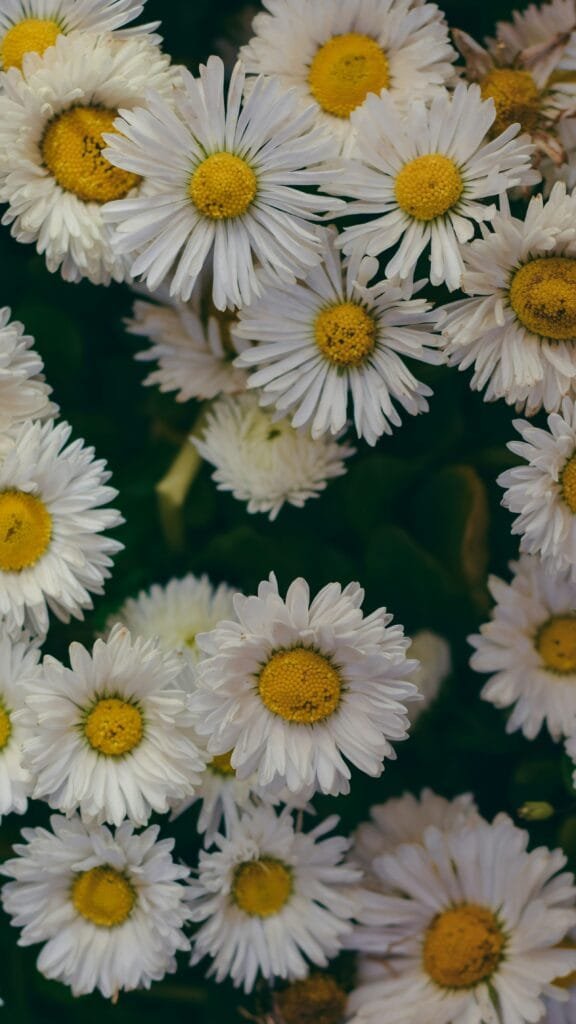
- Repels: Aphids, spider mites, and wasps.
- How It Works: Feverfew’s chrysanthemum-like scent, rich in pyrethrins, repels soft-bodied pests like aphids by disrupting their nervous systems. Its small, daisy-like flowers also attract beneficial insects like lacewings, which prey on pests, while its scent can deter stinging wasps.
- Companion Use: Plant feverfew near roses, cucumbers, or zucchini to reduce aphid infestations and enhance predator populations.
7. Pennyroyal (Mentha pulegium)
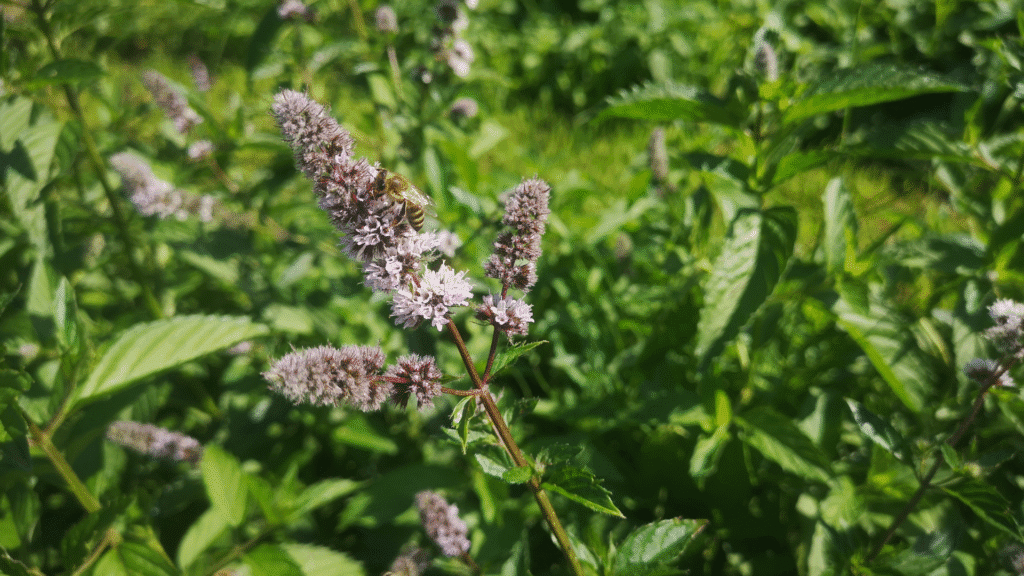
- Repels: Fleas, ticks, and ants.
- How It Works: Pennyroyal’s intense minty aroma, driven by pulegone, is toxic to many insects, particularly fleas and ticks, which avoid areas where it grows. Its low-growing habit creates a ground cover that deters ants from accessing nearby plants.
- Companion Use: Plant pennyroyal as a ground cover near pet areas or around root crops, such as beets and turnips. Avoid ingestion, as it’s toxic to humans and animals in large amounts.
How Aromatic Repellent Plants Work: The Science
Aromatic repellent plants release volatile organic compounds (VOCs) into the air, which interfere with pests’ olfactory receptors, making it difficult for them to locate host plants. These compounds can:
- Mask Scents: Hide the smell of crops like tomatoes or cabbage, confusing pests.
- Repel Directly: Act as irritants or toxins, driving pests away (e.g., pyrethrins in feverfew).
- Attract Predators: Lure beneficial insects, such as ladybugs or parasitic wasps, which help control pest populations.
- Deter Wildlife: Create sensory barriers discouraging deer, rabbits, or rodents from browsing.
Tips for Maximizing Aromatic Repellents
- Strategic Placement: Plant aromatic plants near vulnerable crops or along borders to create a scent barrier. For example, a ring of wormwood around a garden bed can deter multiple pests.
- Regular Maintenance: Prune or crush leaves periodically to release more volatile organic compounds (VOCs) and enhance the repellent effects.
- Diversity: Combine multiple aromatic plants (e.g., sage with feverfew) to target a broader range of pests and avoid over-reliance on one species.
- Soil and Sun: Ensure aromatic plants are planted in well-drained soil with adequate sunlight to maximize essential oil production and strengthen their scent.
Cautions About Aromatic Repellents
- Allelopathy: Aromatic Repellent Plants like wormwood can inhibit the growth of nearby plants, so space them carefully.
- Toxicity: If ingested, Pennyroyal and wormwood are toxic, so keep them away from edible crops or pet areas.
- Allergies: Some plants, like feverfew, may cause skin irritation in sensitive individuals.
By integrating aromatic repellent plants like sage, catnip, hyssop, lemon balm, wormwood, feverfew, and pennyroyal, you can create a natural pest control system that enhances your garden’s biodiversity and sustainability. These plants leverage volatile organic compounds to deter pests, protect crops, and reduce reliance on chemical pesticides, making them essential for organic gardening and eco-friendly horticulture.
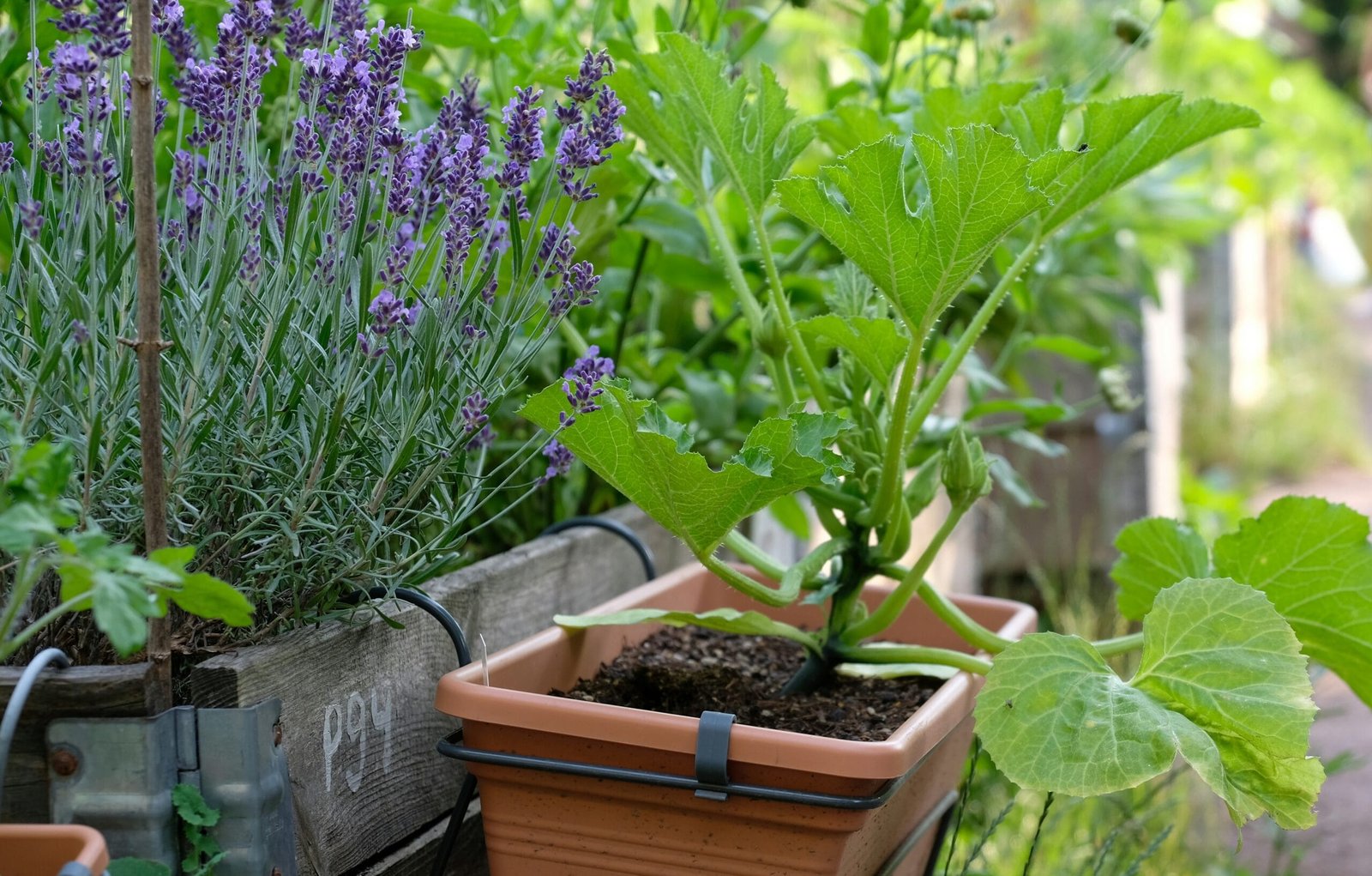
Leave a Reply
You must be logged in to post a comment.